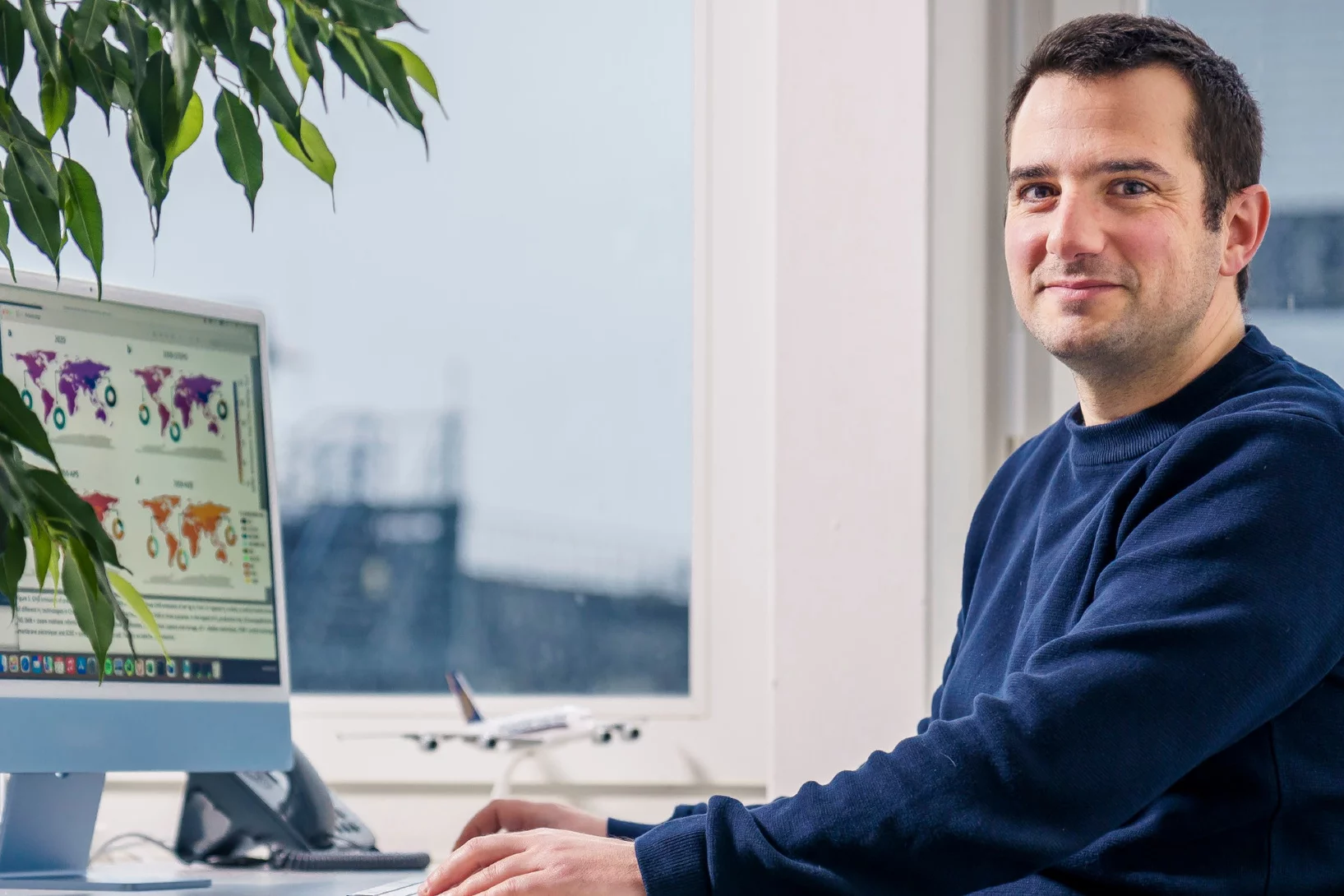LED lamps have seen rapid advances in recent years. PSI researcher Michael Weinold has been studying how this progress came about. One of the causes is spillover effects. These accelerate innovation and are important for the transformation of the energy system – and they can be deliberately promoted.
How do innovative ideas arise? If we knew the answer, we could produce a stream of new technologies. However for the most part, technological progress cannot be planned or else it follows a surprisingly circuitous path. Light-emitting diodes, or LEDs, are a particularly good example of this.
Michael Weinold is now a PhD student at the Laboratory for Energy Systems Analysis at PSI and the laboratory of the same name at ETH Zurich, working with Professor Russell McKenna. For his master’s thesis at the University of Cambridge and ETH Zurich he studied the rapid development of LEDs. He found that spillover effects were an important factor. In research, this term is used to describe advances or technologies that were originally developed for entirely different industries or products. The effect is particularly striking in the case of LEDs, as Weinold demonstrates in his paper. “Above all, the crucial improvement in the quality of the light is largely due to spillover effects,” says Weinold.
Michael Weinold's research was conducted during his time as a visiting researcher at the Cambridge Centre for Environment, Energy and Natural Resource Governance (C-EENRG), in collaboration with Sergey Kolesnikov and Laura Diaz Anadon at the University of Cambridge. The work was part of a larger research project funded by the Alfred P. Sloan Foundation at the University of Cambridge, Harvard University and the University of Minnesota. The project set out to understand how innovation occurs in the energy system and how this process can be specifically accelerated by investing in fundamental research so as to reduce the energy consumption and emissions of new technologies.
Chance and targeted promotion
For decades, LEDs led a niche existence as red indicator lights on electrical appliances. That was until 1992, when Shuji Nakamura and his team came up with the first blue LED, the basis for today’s white LEDs and hence LED lighting in general. The scientists were awarded the Nobel Prize in Physics in 2014 for their work. Since then, there have been rapid improvements in production costs, efficiency and, above all, light quality. The cool LED light of the early days has given way to a pleasantly warm light, whereby the colour of the light can now be freely adjusted.
An example of a spillover effect for LEDs is indium tin oxide (ITO), a material that conducts electricity but is also transparent to light. It has long been used in the aviation industry to heat cockpit windows and so prevent ice from forming. Conductive and transparent – that was exactly what the developers of LEDs needed, and so ITO quickly found its way into their products.
“The great thing about spillover is that it’s free,” says Weinold, because the technology has already been developed and can often be used straight away in other areas. A spillover is often helped by chance. LEDs generate white light from blue light, which is converted by a thin phosphor coating. However, in the early days of LEDs, the only available phosphors produced a cool white light. It was not until a chance conversation between two professors at a conference that the door was opened for a spillover in phosphors. Since then, LEDs have also been able to produce a pleasant warm white light.
The catch is that if spillovers are not to be left to chance, researchers need to know exactly what they are looking for. For example, as long as the fundamental physical effects taking place in a diode are not fully understood, it is not possible to look for specific solutions that will produce higher efficiencies.
According to Weinold, this leads to an insight which ought to be of great interest particularly to those funding research. In order to accelerate the development of new technologies through spillover effects, it is necessary to specifically promote fundamental research. Ideally in those areas where physical or chemical mechanisms are not yet fully understood. Weinold explains: “Once the fundamental principles of a new technology have been properly studied, spillover effects are almost inevitable.”
The future of LEDs
It will be interesting to see how LEDs continue to evolve – if they do at all. In his research, Weinold found that almost all the physical processes involved in generating light with LEDs have come close to their theoretical maximum efficiency in recent years. The development of conventional LEDs could therefore slow down considerably over the coming years.
Nobel Prize winner Shuji Nakamura seems to have anticipated this. He has abandoned the development of conventional LEDs and is now conducting research into laser LEDs, a field in which considerable gains in efficiency are still expected. And major manufacturers such as Osram and Philips are focusing on developing special applications such as micro-LEDs for VR headsets. On the other hand, certain processes in LEDs have already achieved efficiencies of over 100 percent thanks to quantum mechanical effects. So further surprises should not be ruled out.
Making investments to promote spillovers in the energy sector
While PSI’s Michael Weinold was exploring the consumer side, in the form of LEDs, his colleagues in Cambridge were studying the production side, in the form of photovoltaic systems and lithium-ion batteries for storing energy. All three technologies displayed spillover effects, although the impact on the development of LEDs was the greatest.
The research project shows that “you cannot and must not simply separate applied and fundamental research. Both are necessary for the energy transition,” says Michael Weinold. “We have shown that channelling more money into the right areas of fundamental research is an impressive way of promoting innovation and economic development.”
Contact
Original publication
Rapid technological progress in white light-emitting diodes and its sources in innovation and technology spillovers
Weinold et al.
Nature Energy, 25.04.2025





